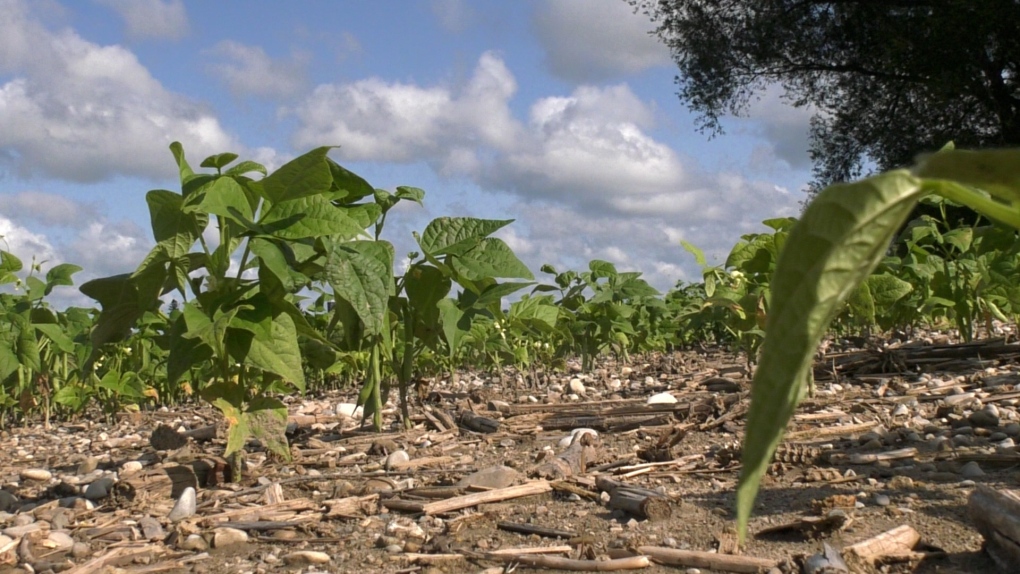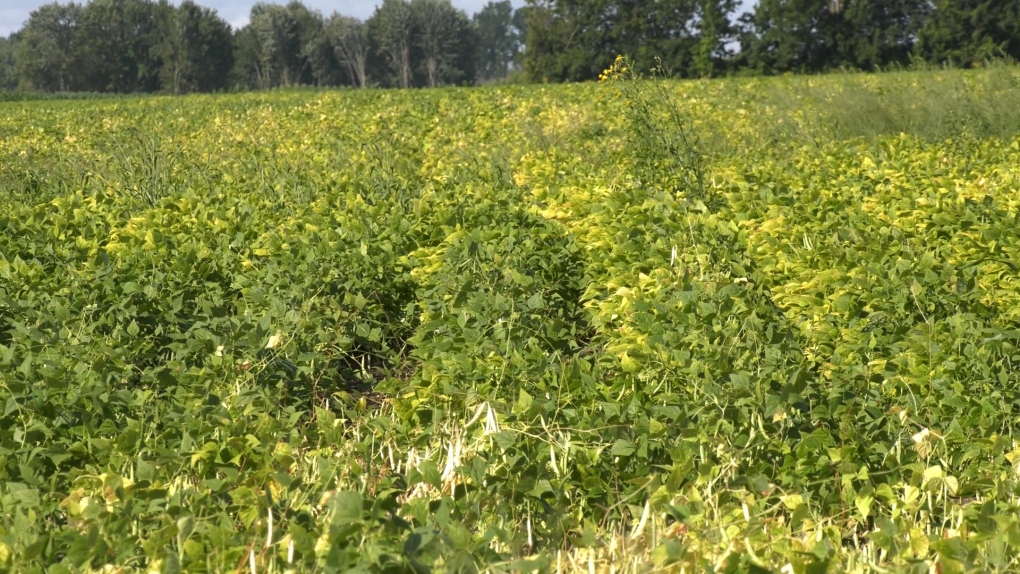Area farmers ride the rainfall rollercoaster
Area farmers continue to ride the rainfall rollercoaster, as rain events have moved across our region throughout the summer.
Agriculture experts say crops are going to need a break in order to limit the impacts of the deluge.
Pearson International Airport reported a record 128.3 millimeters of rain on Saturday. Streets and highways in Mississauga filled with rain, stranding many drivers.
Agronomist Pete Johnson said the rains didn't just take a toll on the roads, "Some of these storms are dropping three, four inches of rain – 100mm of rain – within 45 minutes. The soil just can't tolerate that.”
Johnson hosts the popular podcast Wheat Pete’s Word, part of the Real Agriculture information service.
Looking out on pools of water on a field near Thorndale on Tuesday morning, Johnson told CTV News, “All the water runs to the low spots. It sits there and ponds. Once it ponds 48 hours, the crop is dead."
 Flooding has wiped out a number of plants in a Thorndale-area field, seen on Aug. 20, 2024. (Gerry Dewan/CTV News London)
Flooding has wiped out a number of plants in a Thorndale-area field, seen on Aug. 20, 2024. (Gerry Dewan/CTV News London)
Johnson stressed that heavy rainfalls take an immediate toll, "If it's a big rain drop when it hits bare soil, some people equate that to an atomic bomb hitting the soil. It just explodes and really impacts the fine soil particles at the surface.”
He notes that bean crops have been hardest hit, "Things like the blood beans that go in tomato sauce and that you buy in the Libby's deep brown beans. Or the bush beans that you would buy in the grocery store. The pinto beans. Things that you would put in your chili, the cranberry beans. So it's dry edible beans that we see in many, many dishes. Those plants do not have a good root system."
Most Ontario farmers take steps to limit flood impacts, including using crop rotation to keep the soil healthy and drainage tiles. Johnson said the tiles have their limits during heavy rainfalls.
"I think yields probably will be down a bit. Whether the quality will be down remains to be seen," said Crispin Colvin.
 Yellow leaves are an indication of a bean plant in distress, seen in a Thorndale-area field on Aug. 20, 2024. (Gerry Dewan/CTV News London)
Yellow leaves are an indication of a bean plant in distress, seen in a Thorndale-area field on Aug. 20, 2024. (Gerry Dewan/CTV News London)
Colvin is the regional director in Middlesex and Lambton for the Ontario Federation of Agriculture (OFA). He notes the yellowing of leaves on many bean plants is a sign they are stressed and at risk, but he’s seeing many plants bounce back after just a few days of sun, "The resilience of the crop is really amazing. When you look at the beans that are here and how they've come back from what could have been a disastrous year."
Johnson said for some crops, what's needed now is – believe it or not – a little more rain. Just not too much, "For it to go into a drought condition now would really hurt the late rainfall process on things like soybeans and corn, and the later maturing crops. They're shallow rooted. They need some moisture – an inch a week, something like that."
Still, for the most part, the key is to have more sunny days and warmer temperatures into harvest season.
According to Colvin, “We rely on mother nature. Last year, too hot. This year, too wet. Next year will be perfect."
CTVNews.ca Top Stories

Woman and child fall to their deaths from North Vancouver balcony, homicide team called in
Homicide investigators have been called in after two people fell to their deaths from an apartment building balcony in North Vancouver early Tuesday morning.
High-profile Canadian-Israeli influencer detained in Russia: reports
Police detained a prominent Canadian-Israeli influencer at a Russian airport on Monday, Russian media are reporting.
LIVE DNC Day 2: The Obamas and second gentleman Doug Emhoff set to speak
Former U.S. president Barack Obama, former first lady Michelle Obama and second gentleman Doug Emhoff will speak at the DNC, a day after the unofficial farewell for President Joe Biden, who served eight years as Obama's vice-president.
Senior who killed 8-year-old sentenced in London, Ont. court room
Inside a packed London, Ont., courtroom, the 79-year-old woman who was convicted of driving her vehicle into a troop of girl guides, killing one and injuring several others, was sentenced to two years house arrest, followed by three years of probation.
Humans age dramatically at two key points in their life, study finds
Scientists have found that human beings age at a molecular level in two accelerated bursts – first at the age of 44, and then again at 60.
Halifax police officer shoots, kills three dogs that attacked woman
Police say they shot and killed three large dogs after the animals attacked a woman in Halifax Tuesday morning.
See the best photos from Monday's super blue moon
A rare celestial event was seen around the world, when a blue moon and a supermoon teamed up.
Jennifer Lopez files for divorce from Ben Affleck after 2 years of marriage
After a relationship that spanned two decades, two engagements, two weddings and headlines too numerous to count, Jennifer Lopez has filed for divorce from Ben Affleck.
Ex-officer convicted in George Floyd's killing is moved to new prison months after stabbing
Derek Chauvin, the former Minneapolis police officer convicted of killing George Floyd, was transferred to a federal prison in Texas almost nine months after he was stabbed in a different facility.





























